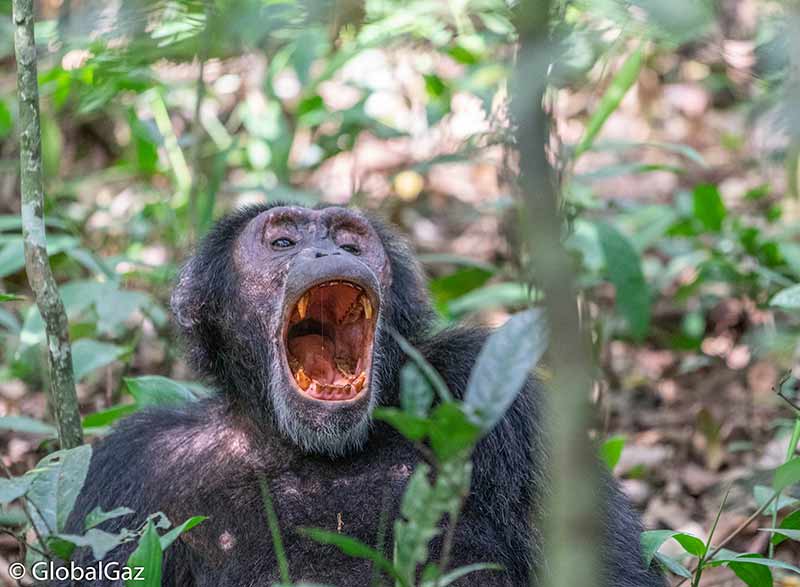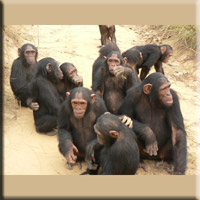
We came across Plant-for-the-Planet whilst searching online for opportunities to support our expanding tree-planting program. For example, trees that are growing in previously open farmland are providing cover and supplementary habitat – we’re starting to see chimpanzees using these woodlots and reforested areas, with the trees facilitating their movement in the landscape. The good news is we’re starting to see the positive impact of tree planting for the chimpanzees (and other wildlife). Many of the farmers who plant trees with us also benefit from these other initiatives, and the project is getting increasing support from local communities. We also sponsor the schoolchildren of households who own fragments of forest used by the chimpanzees – this latter program has been really successful at helping families maintain natural forest on their land, which is critical remaining habitat for chimpanzees.

For example, each year about 800 landowners plant trees with us, which is a good indicator of the level of community engagement! Importantly, we implement our tree planting program in parallel with a variety of other community initiatives, including support for village savings and loan associations, constructing water boreholes and energy cook stoves, and education outreach in schools and villages. Support from Local Community and Co-benefitsĬonservation outside of protected areas is always going to involve challenges, but I’m very proud of the positive impacts BCCP is having. By helping them to develop livelihood alternatives to deforestation, among other benefits and opportunities, we can increase people’s capacity to accommodate living alongside the chimps and engage in environmental conservation – including planting trees!

The region’s chimpanzees live on land that belongs to many hundreds of village households. Much of our work is focused on supporting local people and addressing their needs and priorities. Aside from myself, the 28-strong field team are all Ugandan and most staff are local to the region where the project operates.

BCCP was established as a grassroots project to address these environmental challenges for the benefit of people, chimps, and the environment. Rapid deforestation has had a negative impact on local climate, water and biodiversity, and it’s caused escalating human-wildlife conflicts – especially between villagers and the region’s wild chimpanzees, which were forced into competition with people over space and resources. In recent decades, the natural forests along these watercourses have been mostly cleared for farming, timber and other land uses to support the needs of a growing human population. Today, it’s dominated by agricultural land, villages and urban centers, which probably sounds like an unlikely habitat for wild chimpanzees! The region is cross-crossed by riparian valleys and wetlands, however, which were formerly forested and provided habitat for about 300 chimpanzees, among other threatened wildlife.

Matt McLennan: The ecosystem we work in is an unprotected mosaic landscape in Western Uganda, covering about 1,000 square kilometers. He founded BCCP in 2014 to help conserve the chimpanzees’ forest home, which was being rapidly converted to farmland, and to support the local households who share their environment with the chimps.Īddressing Deforestation and Human-Wildlife Conflictĭr. Matt McLennan, a British primatologist who first came to Uganda in 2006 as a researcher to study wild chimpanzees living in an unprotected habitat close to villages. This is the case in Western Uganda where the Bulindi Chimpanzee and Community Project (BCCP) is working with local communities to address these challenges. Loss of forest cover and biodiversity can often bring conflict between humans and wildlife if left unaddressed.


 0 kommentar(er)
0 kommentar(er)
